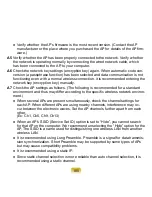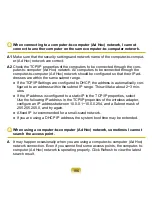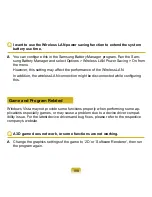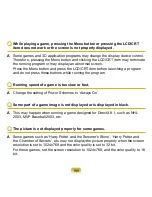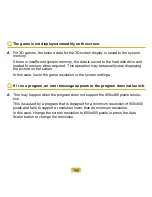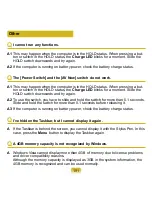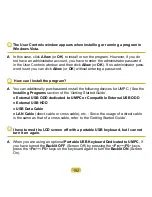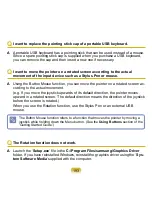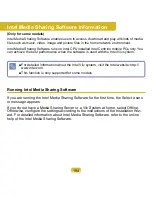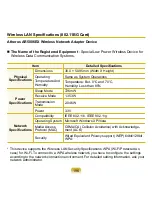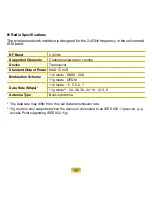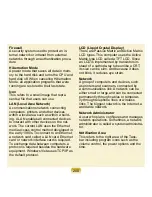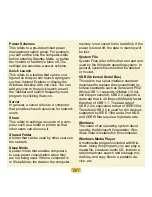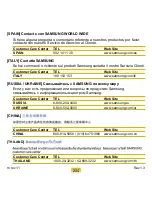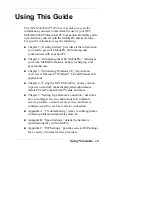
199
Glossary
The Glossary lists the terminologies used in this User Guide.
For terminologies other than these, look in Windows Help.
Backup
A way to save the current data to restore
it later if necessary. A backup is a way to
restore computer data when the data or
computer is damaged.
Client
This refers to a computer that uses a
shared network resource provided by a
server.
DDR SDRAM (Double Data Rate
Synchronous Dynamic Random Access
Memory)
DRAM is a memory type whose cells con-
sist of a capacitor and transistor manufac-
tured at a low price. SDRAM is a memory
type whose performance has been im-
proved by synchronizing the clock with
the external CPU clock. DDR SDRAM is
a memory type whose performance has
been improved by doubling the operat-
ing speed of the SDRAM and is widely
used nowadays. This computer uses DDR
SDRAM.
Device Manager
An administrative tool used to manage
computer devices. You can add or remove
hardware or update a device driver using
the Device Manager.
Direct X
An application interface developed to en-
able Windows application programs to
access hardware devices at a very high
speed. Since the operating speed of graph-
ics, memory and sound cards must be
very fast to provide high quality video and
sound for games, Direct X enables faster
control and interaction between applica-
tions and hardware devices. By using
Direct X, the multimedia performance of
Windows has been hugely improved.
Driver
Software that interacts between the hard-
ware and the operating system. An operat-
ing system knows the hardware informa-
tion and controls the hardware. In general,
a driver is supplied with the corresponding
hardware device.
DVD (Digital Versatile Disk)
DVD was developed to replace CD (com-
pact disk). Although the shape and size of
the disc are the same as that of a CD, the
capacity of a DVD is at least 4.7GB while
the capacity of a CD is 600MB. DVD video
is digital unlike VHS (analog) video and
supports MPEG2 compression and digital
audio. To play a DVD, a DVD drive is re-
quired.

